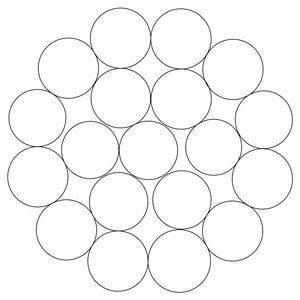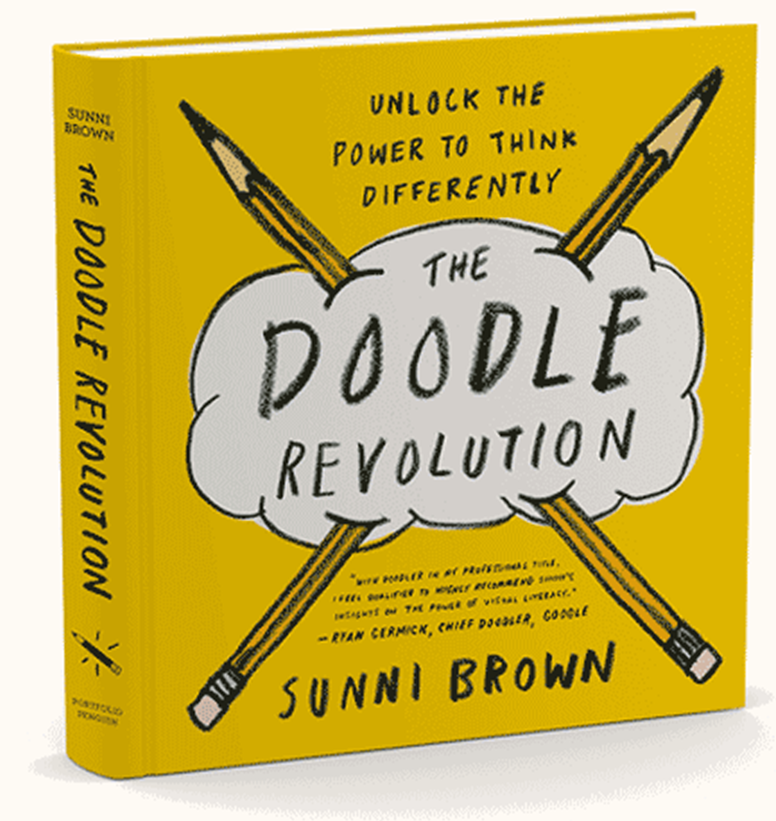Why doodling is a habit you don’t need to break
Modal Trigger


US Secretary of State Hillary Clinton doodles during a UN Security Council meeting.Getty Images
At a 2012 United Nations Security Council meeting, Hilary Clinton hunched over her prepared speech, head in hand, writing intently. But she wasn’t taking notes on Syria or buffing up on global security. She was doodling.
A star, a series of circles (like a bunch of grapes), a swirl pattern covered the margins of her prepared speech.
It was the meeting’s greatest gotcha moment.
“Caught in the act,” a headline read.
“It’s hard to keep one’s mind focused at all times,” quipped the Daily Mail.
Except that’s exactly backwards, says Sunni Brown, author of “The Doodle Revolution.” Belittling the doodle is “antiquated” and a “little unenlightened.”
“It’s in exactly these moments when information density is very high that makes doodling so important,” Brown says.
“[Clinton] was harnessing her visual, mental and physical energy to stay in the game.”
Doodling is beneficial — necessary, even, says Brown, whose consultancy firm based on the principles of her new book coaches companies like Zappos, Disney and Dell, that you should be more concerned that someone is not doodling.
Every president from Washington to Nixon doodled, according to the book “Presidential Doodles” which came out in 2006.
Like his wife, ex-President Bill Clinton is an avid scribbler. (While in office, he drew a well-endowed stick figure and a portrait of Serbian president Slobodan Milošević on classified documents, according to hacked presidential files released to the public last year.) President Obama admits that he doodles faces. “So, sometimes when I’m in a big, important international meeting and you see me writings stuff down, it might be that I’m just drawing some, drawing some folks,” he said in an interview in 2012.
Writers (Mark Twain, Sylvia Plath, Franz Kafka, to name a few) and inventors (Thomas Edison) were avid doodlers.
“Whenever you look at a notebook or a journal from any intellectual or hard-core creative, you see doodles,” Brown says. “There’s a reason for that.”
Our highly visual brains see words as images, she says. Doodling, which unites different neural pathways in the brain, opens us up to greater insights, better information retention and higher levels of concentration, getting us closer to those coveted “a-ha” moments, she argues.
Rather than being a sign of disengagement or distraction, doodling keeps our mind occupied and focused, she argues.
Use these words to replace the words in bold...
patronising slumped over content richness
in complete concentration scandal boredom
recall muscular mental keen
exploiting keep focused backwards unenlightened
Discuss
Do you doodle?
Do you have a doodling style?
Do you usually draw faces, abstract shapes and patterns, words, pictures or nature?
Is your style a hybrid of these styles?
The five types of doodlers
Use these words to replace the words in bold...
patronising slumped over content richness
in complete concentration scandal boredom
recall muscular mental keen
exploiting keep focused backwards unenlightened
Discuss
Do you doodle?
Do you have a doodling style?
Do you usually draw faces, abstract shapes and patterns, words, pictures or nature?
Is your style a hybrid of these styles?
The five types of doodlers
The world is broken down into five different styles of doodlers, according to Sunni Brown, author of “The Doodle Revolution.” No type of doodler is more Mensa material than any other, though she does say that “hybrid” types, or those that use more than one type of doodle style, are “rarer” than those who only use one:
The abstract doodler

Doodlers who skew toward the more abstract often make “geometric patterns reminiscent of the De Stijl art movement and/or visual flows that don’t result in recognizable object or form,” writes Brown.
Presidents Richard Nixon and Herbert Hoover were avid abstract doodlers; here’s one of Hoover’s line drawings on White House letterhead.
The word doodler
These people tend to scribble down the same word repeatedly, sometimes playing with fonts, underlining or tracing. “Our brains interpret letters as images, so the word they’re tracing is supporting their focus and thinking,” Brown writes. John F. Kennedy was an avid word doodler. In one example, he repeated the word “Vietnam” eight times in scrawled writing with boxes around the words. This sketch, made during the Cuban Missile Crisis, includes “Castro,” “Blockade” and “NATO” along with a sailboat and checkers board. During JFK’s last meeting before his death, he wrote and rewrote the word “poverty” on his files.
The picture doodler

Picture doodlers often draw recognizable, clear-cut images with an intended meaning. Director Ron Howard is a picture doodler and so was President Dwight Eisenhower, who often produced images of “broken fingers, broken pencils, and misguided missiles.” “It’s tempting to entertain the meaning behind these broken phallic images,” Brown writes, “but let’s not go there.” Here, Eisenhower drew himself and a ship during a conference meeting.
The face doodler


These doodlers fixate on facial features and portraits, says Brown. President Obama admitted that he’s a face doodler and President Ronald Reagan was a renowned face doodler who often made self-portraits and pictures of babies.
The nature doodler: “Preoccupied with natural elements,” these doodlers often draw images from nature, like flowers or mountain ranges, says Brown. “The Lord of the Rings” author J.R.R. Tolkien was a gifted nature doodler, as seen in some of his highly stylized landscape drawings. One of the surviving Franklin Delano Roosevelt doodles is of a fish, but he was pragmatic about it. “I caught a fish: I will make a drawing of me catching the fish,” he said.
Language focus
prepositions
At a 2012 United Nations Security Council meeting, Hilary
Clinton hunched ______ her prepared speech, head ____ hand, writing intently. But
she wasn’t taking notes ____ Syria or buffing ___ on global security. She was
doodling.
punctuate
a star a series of circles like a bunch of grapes a
swirl pattern covered the margins of her prepared speech
word form
It was the meeting’s GREAT gotcha moment.
“Caught in the act,” a HEAD read.
“It’s hard to keep ONE mind focused at all times,” quipped
the Daily Mail.
Except that’s exactly BACK , says Sunni Brown, author of
“The Doodle Revolution.” LITTLE the doodle is “antiquated” and a “little ENLIGHT .”
“It’s in exactly these moments when information DENSE is
very high that makes doodling so important,” Brown says.
“[Clinton] was HARNESSS her visual, mental and physical
energy to stay in the game.”
Doodling is BENEFIT — necessary, even, says Brown, whose CONSULT firm based on the principles of her new book coaches companies like
Zappos, Disney and Dell, that you should be more concerned that someone is not
doodling.
Quizlet
Multiple choice questions
- Anything of value that is owned
- to waste time
- mass/volume
- the name of a famous museum(s)
- Having great depth or seriousness
a disconnect
Is there a disconnect between who you want to be and who you are?
akin to
In what way are these things akin (similar) to one another?
dream - life
death - sleep
time - river
women - flowers
stars - eyes
society - beehive
Can you make a few more of these?
to dilly dally
Are you a procrastinator? Why do people procrastinate?
counter to
Counter can mean "remedy" or "protection" - what's a good counter to....
the hiccups
onion tears
itchy eyes
megolomania
Do you know anyone who is a "power tripper" - who loves to have power and will do anything to get it?
psyche
Does you country have a national psyche?
to eradicate
If you could eradicate something, what would it be?
density
Do you like living in high, medium or low density population? Why?
profound impact
Talk about a book, film or person who's had a profound impact on your life.
Discuss the graphic below: how do you learn best?

Draw what this makes you think of





Dream





No comments:
Post a Comment